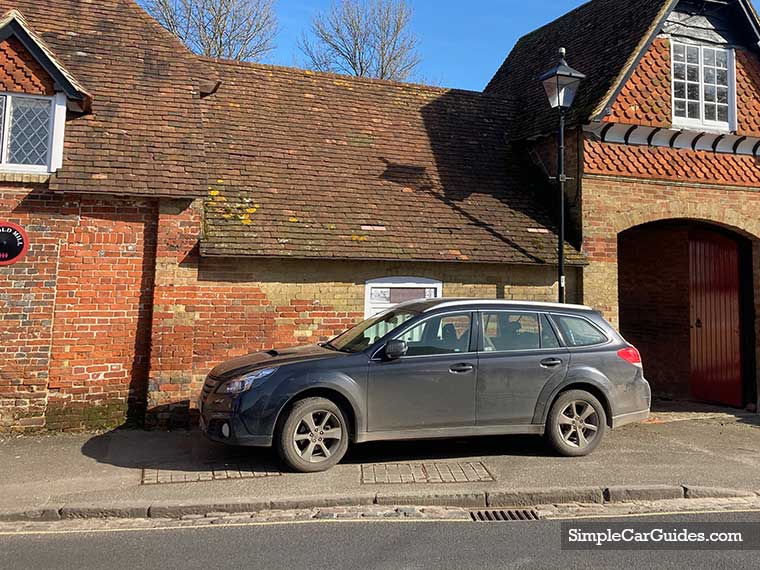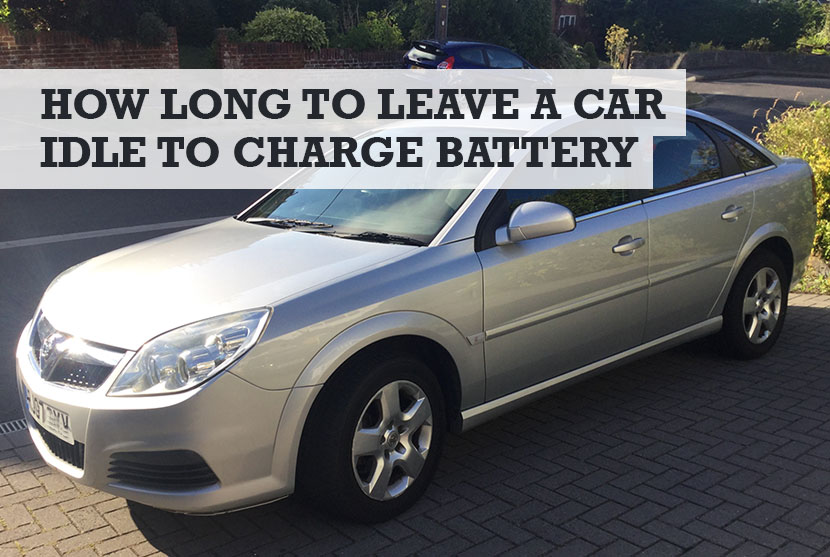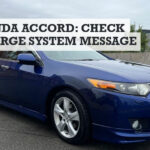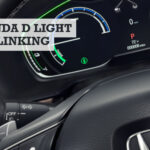If you’ve left your car on the drive without starting it up for a couple of weeks, the chances are you will need to recharge the battery before you go again. You can charge a car battery by idling, but you need to leave it long enough to work… just how long you let your car idle, and other tips, are explained below.
How long does car need to idle to charge the battery? You can leave your car to idle for between 15 and 20 minutes to charge the battery. This idle time whilst parked gives the battery the time it needs to recharge. However, I also recommend you then drive for 30 minutes for a full charge.
That’s generally accepted to the answer for older cars, but I would not recommend leaving your car to idle for that long in newer cars, as I will explain below.
Before I go any further with some essential tips on how to leave your car idle to charge battery, you could avoid this completely. Just make sure than the battery is charged by driving at least every 3 to 4 days for 30 to 40 minutes.
Keeping the car battery charged up is incredibly important for the smooth functioning and performance of a vehicle. Here are my tips on what you need to know to keep your battery operating in top condition – hopefully so you don’t need to leave your car idling again!

Idling your car to charge the battery
Driving a car for 30 minutes or so will keep the battery topped up – the minimum recommended is a 30 minute or so drive every 3 or 4 days. This will keep the car battery operating in tip-top condition.
Handy Hint: Did you know that a car battery can die even when you’re driving. Here’s what you will need to do.
However, if you’ve been unable to drive for a long time or your car has otherwise been unused then you can attempt to idle charge the battery.
Idling charging works because the battery charges if the engine is running – this is especially true on older cars. If the battery is receiving more energy from the alternator than electronic systems are drawing out, then it will charge.
Newer cars might be a touch more difficult to idle charge, as they can come with components that limit energy or systems that manage the battery. This technology can limit or even completely mitigate the charge your battery would get from running the engine at a low RPM.
If this is the case, you might need to get a conventional or smart charger for your car battery.
How long to leave car idle to charge battery?
I explained earlier how leaving a car to idle for between 15 and 20 minutes will help charge the battery. Whilst this is true for older cars, the answer is a little more complex in more modern vehicles, and not always advised.
The battery management system in newer cars means that the battery won’t charge unless you are at high RPMs, and those high RPMs won’t be happening if the car is idling whilst parked.
Attempting to charge the battery when idling can also contaminate oil in the car which could then lead to mechanical failures. Condensation can also build up in the exhaust without being expelled like it would be during a drive – this can cause rusting.
Before you leave your car to idle, be aware a car left with the keys in is one of the easiest ways a Civic can get stolen (the theft rate is higher than other cars).
So, what’s the alternative to leaving a car idling to charge the battery? It’s with chargers of course, explained below.
How to charge a car battery with chargers
Charging a car battery is a relatively straightforward process but there are some important things to keep in mind. We’ll lay out a step-by-step guide for you to follow.
Step 1
Check what kind of battery you have, conventional chargers work on conventional batteries, but quite a few cars come with AGM (Absorbent Glass Mat) or EFB (Enhanced Flooded Battery). If you do have an AGM or EFB battery, you’ll need a smart charger (view on Amazon).
Using a conventional charger on AGM or EFB batteries can overcharge the battery and cause irreparable damage.
Step 2
Locate the “lead terminals” – they should be at the top of the battery. You should clean these up if they’re dirty or corroded so that everything connects smoothly and safely.
Step 3
Disconnect the car battery – ALWAYS disconnect the negative lead first so that the positive lead doesn’t electrocute you. You should also reconnect the negative lead LAST, for the same reason.
You might need to reset any settings for the electronics in your car – so keep any pins or security codes handy.
It should be noted that often is possible to charge a car battery while it’s still connected, but if your car is still stalling try disconnecting and then charging.
To repeat for safety – when disconnecting the car battery, disconnect the negative lead first and then the positive lead.
Step 4
Connect the charger – keep the charger away from the battery and match the clamps on the charger to the battery terminals – positive to positive and negative to negative. Then plug your charger into the outlet.
Switch your charger on.
Step 5
Wait for the car battery to charge, some chargers will automatically switch off when they detect that the battery is completely charged.
How long this takes depends on your charger – it should tell you in the manual. Smart chargers will detect the overall status of your battery and switch themselves off when done.
If you’ve disconnected the car battery to charge it then remember when reconnecting it’s POSITIVE FIRST and NEGATIVE LAST.
That’s not the only alternative to letting your car idle to charge the battery. You can also try trickle charging your car battery.
How to trickle charge your car battery
If you’re not going to be using your car for long periods, or you don’t want to worry about the battery completely running out of charge then there’s an option for you – trickle charging.
Trickle charges – named that way because they top the battery up in small increments, are a great option. They can be attached to a car for a long time and simply forgotten about. They’re great if you’re going to be leaving a car in a garage for months, you just put the trickle charge on now and again.
The trickle charger (view on Amazon) eliminates any worries about the battery becoming depleted and doesn’t risk overcharging the battery and damaging any of its components.
What are the signs of a faulty battery?
There are five primary signs of a battery that has a low charge or possible other faults, in no particular order these are:
1. Car not starting
The most obvious sign is that your car is not starting – this means there isn’t enough charge available to start the engine.
2. Smell (leaky battery)
A sulfuric smell is always a troublesome sign, in this case, it usually signifies a leaky battery. Leaky batteries release harmful substances into the engine and can cause massive problems.
3. Faulty lights/radio/Air conditioning
If your car is working fine but the electrical systems are showing faults and issues throughout, then this is a strong sign that the battery is struggling – one of its primary functions is to provide and regulate the power to the electronic systems.
4. Active check engine light
An active check engine light means that something is going on – but if everything seems fine then there’s a good chance that the battery is starting to have issues.
5. Battery age
An often overlooked and forgotten thing, the average car battery lasts around 5 years or so and once a battery gets old it simply starts to conk out. If you’ve never gotten a new battery for an older vehicle, it could simply be an old battery beginning to fail.
Related questions
How long should you run a car after a flat battery?
If you’ve jumpstarted your car after a dead battery then you should run your car for around 30 minutes. It’s not recommended that you idle charge your car, you’re going to want to actually drive the car – even on older cars, the battery could go flat again.
Does revving the engine charge a car battery faster?
In theory, revving will charge a battery faster. Here’s what you need to know about revving and how long to do it for.
How long does it take to charge a dead car battery while idling?
A completely dead battery might not charge at all while idling, if your car is starting but the battery has a low charge it could take a long time to fully charge the battery. This is especially true of newer or hybrid technology-based cars.
If your battery is completely dead (the battery voltage is way below 12) it’s probably not going to start up without a jump charge from another car.
How long for the alternator to charge an idle battery?
Providing the alternator, belt, and engine are all functioning properly the alternator will charge an idle battery. How long this takes depends upon the model of your car and what kind of car batteries you have.
An older car’s alternator will charge the battery a lot faster, possibly 20 – 30 minutes, but it reduces the battery’s lifecycle – sometimes substantially so. Newer cars, with hybrid technology, have alternators optimized to charge the battery when the car is driving.
How long to recharge a car battery after a jumpstart?
It should be at least 30 minutes, but it’s always recommended to drive the car around, this lets the alternator work optimally to fully recharge the car battery. This also ensures the battery won’t conk out on you again – having to do multiple jumpstarts is a very bad idea.
How long to run the car to charge the battery in cold weather?
Running the car for 15 minutes should help the battery keep a healthy charge in cold weather. This is especially important because it can be harder for the batter to maintain energy output in colder weather conditions.
Charging a depleted battery in colder conditions is a completely different story, it can take many hours to completely recharge heavily depleted batteries. A cold battery simply doesn’t accept a charge from the alternator as well, as the battery must be at around room temperature before it optimally accepts the charge.
How to keep car battery charged when not in use?
You can keep a car battery charged when not in use with the following methods:
- Use a trickle charger or battery conditioner.
- Don’t turn you car on and then off again for just a few minutes.
- Try to avoid just doing very short journeys.
- When you do drive, make it 15 to 20 minute journeys.
- If you have more than one car, alternate the drives.
- Unplug any unnecessary accessories.
Conclusion
Just very quick, but leaving your Civic to idle could also make it an appealing target to thieves. Here are 11 tips on how to precent your Civic from being stolen…
Now back to the matter in hand…
The car battery is an important component of any vehicle, as it provides the power to start the engine running and acts as a surge protector for any onboard computer systems.
If you’re wondering how long you should let your car idle to charge your battery, then I hope this now makes sense that perhaps you should use an alternative method.








